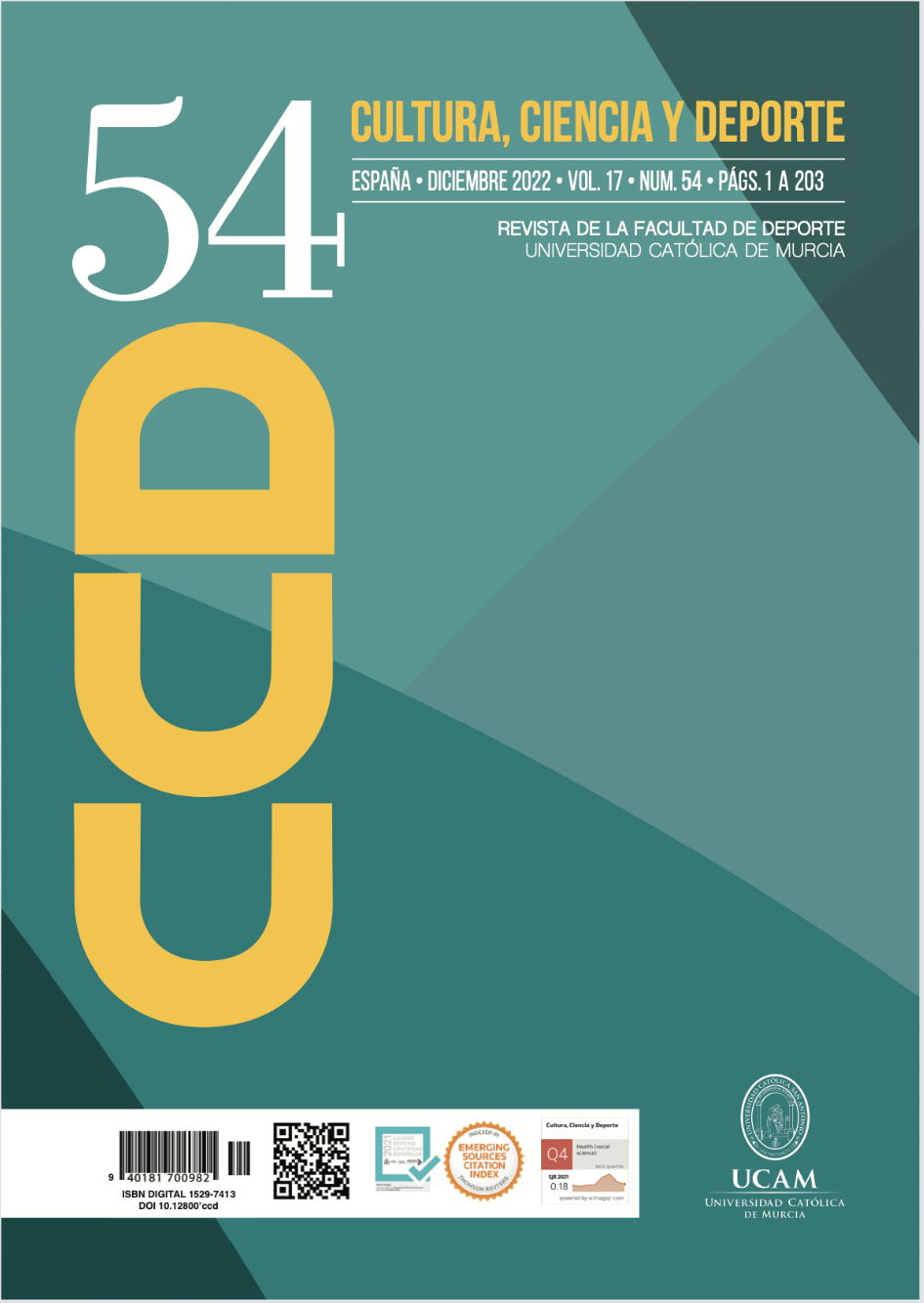Accurate assessment of walking energy expenditure in the main seafront walking route of Las Palmas de Gran Canaria to promote health-related tourism
DOI:
https://doi.org/10.12800/ccd.v17i54.1911Resumen
This investigation aimed to determine the energy expenditure incurred by males and females in the most popular walking route in Las Palmas de Gran Canaria using state-of-the-art methods. The energy expended in the main walking route of Las Palmas de Gran Canaria (13 km in total, round trip) was determined with a portable indirect calorimeter (COSMED K5) in thirty-three volunteers aged 21-69 yr (22 males and 11 females).
Geolocalisation was used to determine the walking speed (5.6 ± 0.5 and 5.2 ± 0.4 km.h-1 , for males and females, p=0.044) and exact energy expenditure corresponding to each kilometric sector and create information panels of interest for walkers to promote health tourism. The total energy expenditure (10.8 ± 1.0 and 10.4 ± 0.8 kcal.kg body weight-1 , respectively, P = 0.35) and physiological responses (heart rate and respiratory variables) during the walks were similar in males and females. The energy expenditure and the contribution of fat oxidation to the overall energy expenditure increased similarly with the distance walked in both sexes. In conclusion, the energy expenditure for walking routes increased with the distance walked and is similar for males and females when normalized to wholebody mass. Portable indirect calorimetry can be used to accurately map the energy expenditure associated with walking routes to promote health tourism.
Descargas
Publicado
Cómo citar
Número
Sección
Licencia
Derechos de autor 2022 Creative Commons Attribution License

Esta obra está bajo una licencia internacional Creative Commons Atribución-NoComercial-CompartirIgual 4.0.
Los autores que publican en esta revista están de acuerdo con los siguientes términos:- Los autores conservan los derechos de autor y garantizan a la revista el derecho de ser la primera publicación del trabajo al igual que licenciado bajo una Creative Commons Attribution License que permite a otros compartir el trabajo con un reconocimiento de la autoría del trabajo y la publicación inicial en esta revista.













